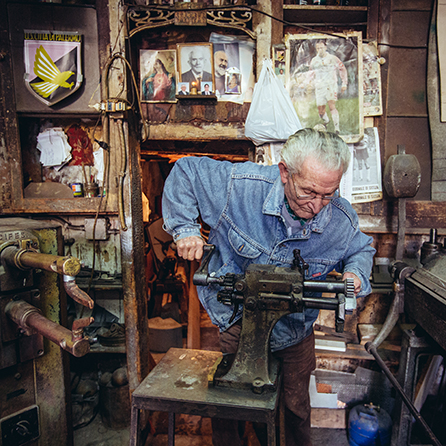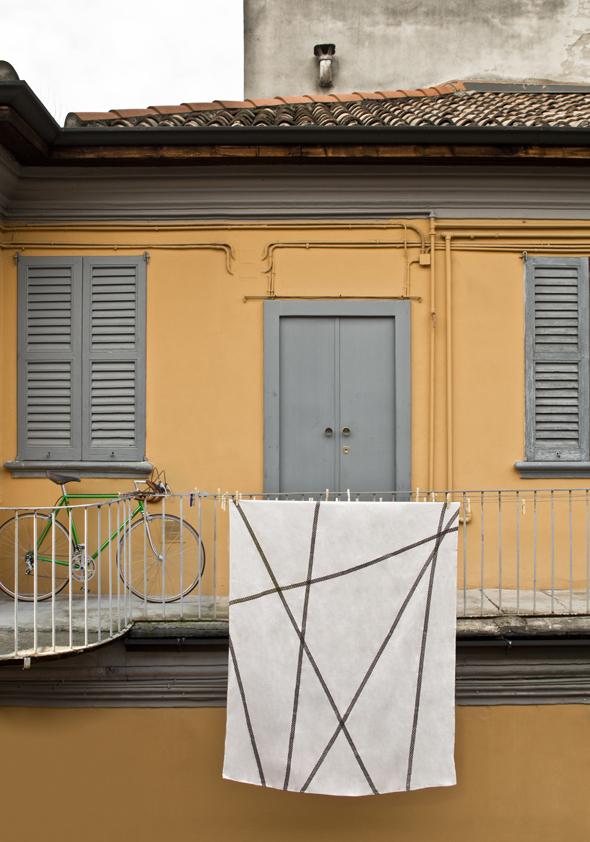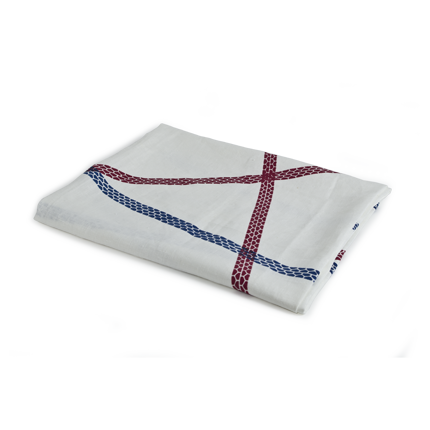When you are a design tragic, one of the great things about visiting foreign cities is the chance to randomly stumble across an interesting new brand that hasn’t previously been on your radar. So it was with Internoitaliano, a young label founded by Italian designer Giulio Iacchetti. I was wandering around the Moscova area of MIlan in April, waiting for an interview with ex-pat Australian designer Brodie Neill, when I came across a fashion boutique window with a range of interesting furniture pieces. Later when the clothing boutique, ASAP (As Sustainable As Possible) was open, I came back to have a closer look at Iacchetti’s brand. Launched in November 2012, the brand revealed its third collection during MIlan Design Week in April, so the label now includes furniture, fabrics and accessories.
Iacchetti is an established designer with work for Casamania , Foscarini, Meritalia and Magis in recent years. Set up to bring a sense of normality to design and to create a more direct link between designer and maker, Internoitaliano has sought out specialty makers throughout Italy while basing the company around a direct purchase model via their website.
Subsequently, the brand mixes modern online convenience shopping with old world manufacturing skills. One of the latest additions to the brand’s collection is fabricated by a 75 year old master tinsmith from Sicily. What is astounding about this, beyond the fact that Iacchetti has sought out these artisans rather than having his designs made industrially, is that the pricing remains incredibly affordable.
The secret to how this is possible isn’t being divulged just yet but it must have something to do with keeping the collection small and the bypassing of retail. But the brand goes beyond great design pieces and excellent pricing and includes a touching acknowledgment of the role the makers have to play by giving them equal credit in the brand's press material.
While Iacchetti is the designer of nearly the entire collection, he is also open to collaborations and has worked with young Italian designer Alessandro Stabile on the new ‘Mori’ coatstand. Available in either walnut or beech, the turned timber valet is made by Somaschini Felice e Nipoti - a small manufacturer specializing in woodturning. Skeletal but friendly, it is practical piece of sculpture for the bedroom.
Reminiscent of the concrete bollards found around Milan, 'Bard' is a footstool made from beech with polyurethane foam and a bi-elastic fabric printed with a concrete look. The formidable looking object is actually comfy to sit and stand on. Like an architectural feature for your own home, the stool is hard to resist poking to see if it really is made from concrete or not.
Another new item that I find intriguing is the ‘Lugo’ tablecloth. Designed by Leonardo Sonnoli and Irene Bacchi, the cloth is printed using a traditional Romagna technique that typically involves rust printing on canvas. In the Internoitaliano version the printing is on linen and the design inspired by wet bicycle tracks on pavements. The design is printed by Antica Stampena Artigiani Marchi, a company specialising in artisanal printing methods. The cloth is only in one size - 230cm x 140cm but comes in a variety of colours.
Earlier designs of note include the ‘Affi’ stool – a beautifully detailed timber stool in walnut and beech, the ‘Paesemio’ wallpaper printed by Jangelli & Volpi and the ‘Casablanca’ vase produced by Laboratorio Pesaro. The methods range from hi-tech 5 axis c’n’c wood machining to handprinting and slip-cast ceramics.
The 'Erba', 'Mira' and 'Pila' pots in turned terracota from 2013, provide a geometric backdrop for the natural irregularity of plants. They start at 67 euro or can be purchased as a set for 200 euro. The stackable planters are made by Fabbrica Casa Museo Giuseppe Mazzotti 1903, a longstanding maker of ceramics based in Pozzo Garitta. The pots all share the same saucer size but are of differing heights.
Like many of the other products in the Internoitaliano range, these simple terracotta planters combine clean shapes with a focus on hand finishing. The result is familiar yet modern.
For more of an insight into the philosophy of Giulio Iacchetti watch the video below filmed during Salone Del Mobile earlier this year. The image is a close up of his 'Paesemio' wallpaper.



















